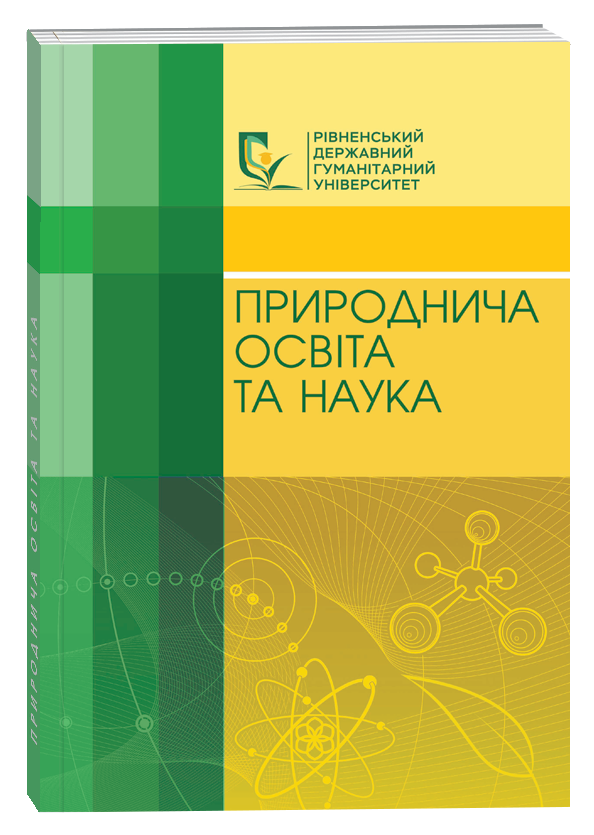FEATURES OF BIOCONVERSION OF VEGETABLE WASTE
Abstract
The article analyzes the effect of microbiological preparations on the fermentation process of organic vegetable waste. An organic substrate consisting of plant residues after the cultivation of carrots and beets with the addition of cattle excrement removed by water washing (manure) in a ratio of 1:1 was prepared for conducting research for the purpose of compost production. The effectiveness of three microbiological preparations was investigated: the biological preparation “Microzyme Compost Detach”, the biological preparation “Vodogray 200 K” and the biological preparation “Tamir”. These are biological composting accelerators that increase the speed and hygienic efficiency of biofermentation of waste, from various manufacturers. Biopreparations contain a highly concentrated complex of living natural thermophilic aerobic microorganisms and natural enzymes of food grade – extracellular proteins that have the ability to break down organic substrates: cellulose, lignin, hair, fats, protein, fibers. Organic waste is exposed to complex microorganisms, as a result of which the high temperature created during composting kills all pathogenic microflora, helminth eggs, plant seeds in the solid components, and the smell is removed. Among the studied options for the usage of biological preparations, the highest temperature of the substrate on the 15th day of exposure was in the option with “Microzyme Compost Detach” – 71 ℃. The mass amount of the obtained product decreases by 48–67% (in variants with the addition of microbiological preparations) due to an increase in the efficiency of fermentation and evaporation of moisture. The best variant of the study is the variant with the addition of the microbiological preparation “Vodogray 200 K” – the substrate was reduced by 67%. Moreover, the original compost with the addition of microbiological preparations is more homogeneous, and the compost of the control variant with partially undecomposed components. In addition, the term of composting with the use of microbiological preparations decreases depending on the type of preparation: for the use of the biological preparation “Tamir” it decreased by 18 days, the biological preparation “Microzyme Compost Detach” – by 26 days, and “Vodogray 200 K” – by 31 days.
References
2. Корбут М.Б., Давидова І.В. Популяризація процесу компостування органічних відходів у побутових умовах. Екологічні науки. 2021. № 7 (34). С. 210–214. https://doi.org/10.32846/2306-9716/2021.eco.7-34.35.
3. Дослідження процесів компостування харчової складової твердих побутових відходів / О.А. Сагдєєва та ін. Техногенно-екологічна безпека. 2018. № 4 (2). С. 13–23.
4. Potential of windrow food and green waste composting in Tunisia / N.E.H. Сhaher et al. Environmental Science Pollution Research. 2020. Р. 1–13.
5. Crop residue harvest for bioenergy production and its implications on soil functioning and plant growth : A review / M.R. Cherubin et al. Scientia Agricola. 2018. № 75. Р. 255–272.
6. Directive 2009/28/EC of the European Parliament and of the Council of 23 April 2009 on the promotion of the use of energy from renewable sources. Official Journal of the European Union. 2009. L 140 (52). Р. 16–62.
7. FAOSTAT Crops and Livestock Products. 2021. URL: https://www.fao.org/faostat/en/#data/QCL (дата звернення: 23.07.2024).
8. Impacts of crop residues on soil health : A review / B. Fu et al. Environmental Pollutants and Bioavailability. 2021. № 33. Р. 164–173.
9. Waste Management through Composting: Challenges and Potentials / S.A. Modupe et al. Sustainability. 2020. № 12. P. 4456. DOI: 10.3390/su1211445.
10. Composting: The way for a sustainable agriculture / M. Pergolaa et al. Applied Soil Ecology. 2018. № 123. P. 744–750. DOI: 10.1016/ j.apsoil.2017.10.016.
11. Agro-industrial wastes and their utilization using solid state fermentation : A review / P.K. Sadh et al. Bioresources and Bioprocessing. 2018. № 5. Р. 1–15.
12. A meta-analysis of projected global food demand and population at risk of hunger for the period 2010–2050 / M. van Dijk et al. Nature Food. 2021. № 2. Р. 494–501.
13. Biotic and abiotic catalysts for enhanced humification in composting: A comprehensive review / Vu Khac Hoang Bui et al. Journal of Cleaner Production. 2023. Vol. 402. P. 136832. https://doi.org/10.1016/j.jclepro.2023.136832.






